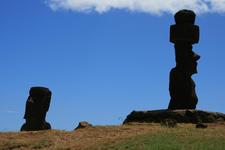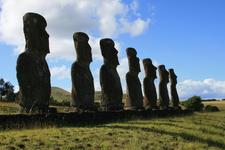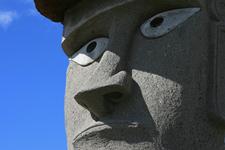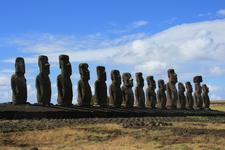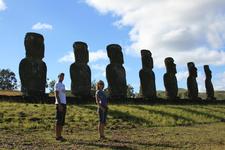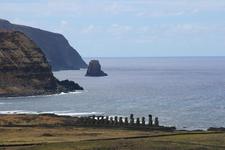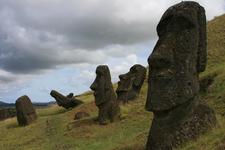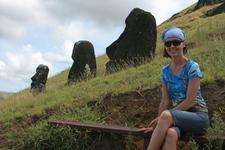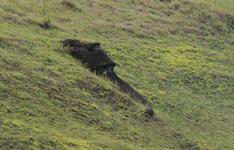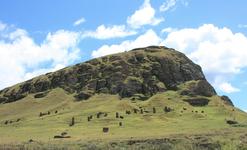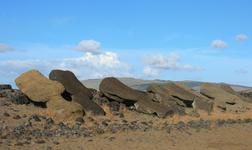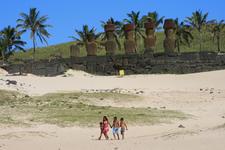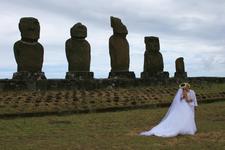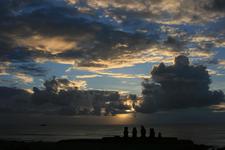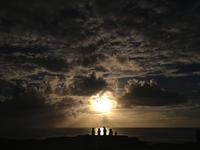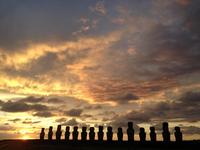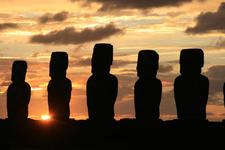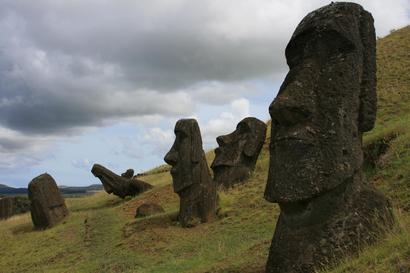
The log books of the first ships that reached Rapa Nui in the 18th century don’t mention anything about moai – the mysterious monolithic figures the Easter Island is famous for today. Well, it seems that the first European explorers simply didn’t see them.
As the colonization continued in the 19th century and the new expeditions travelling around the Pacific Ocean reached the Easter Island again, the captains began discovering the land more thoroughly and this time they found the statues. However, what is quite interesting, most of the figures they came across have been laying on the ground with their faces down. Archeologists explain that this is a result of wars between local tribes living on the island. But, let’s start from the beginning.
Moai were statues created by Rapa Nui people after the death of an important member of the tribe. The judgment whether such a tribute should be paid to the dead was made by the whole clan who decided whether the chief, wise man or warrior deserved it. It was also a question whether the departed prominent would be powerful enough to protect the tribe with its powers through the moai, as this was the key aim for those figures to be made. If the decision was a positive one the tribe went to pass the request to the quarry master in Rano Raraku. This was the place where the workers carved the figures directly out of the volcanic rock. It took at least one year to carve the moai from the volcanic slope if the figure was not too big. Yet, when the tribe wanted a bigger statue it had to wait even two years to see the final effect.
It is estimated that the first figures were carved in the 11th century. They always resembled those people after the death of which they were created. In the course of history the tribes begun competing with each other to make the biggest, highest and more beautiful moai. That’s when the hats came on (see pictures below)! The biggest statues placed on the sacred platforms weighted above 65 tones and were more than 10m high. However, the biggest one still lays unfinished in the quarry and is 20 meters tall.
There are 900 moai figures on Rapa Nui. More than 450 of them are still in the quarry (sometimes buried to half of their size in the ground) but the rest is spread across the whole territory of the island. There are many theories about how they were transported: with the rolling trunks of palm trees, pushed or pulled through the sand or… that they walked as they were sacred figures.
Archeologist estimate that the last moai were carved in the 17th century. Yet, their end came around one century later. It is believed that the figures were destroyed by the Rapa Nui people themselves during the tribal wars. As the statues were erected to protect the tribe it was the first thing that was destroyed when the village was raged by another tribe. It was very important to knock over the moai in such a way so that it falls face to the ground as all the protective powers came through the eyes. If the moai fell with its face up the rival tribe poked the statue’s eyes.
All the figures which are currently standing on the platforms are renovated but there are many more still lying face down or half-buried across the whole island. The Rapa Nui National Park is on the UNESCO list so hopefully the money from this organization and from all the tourist who visit the island every year will allow to restore more figures soon.
